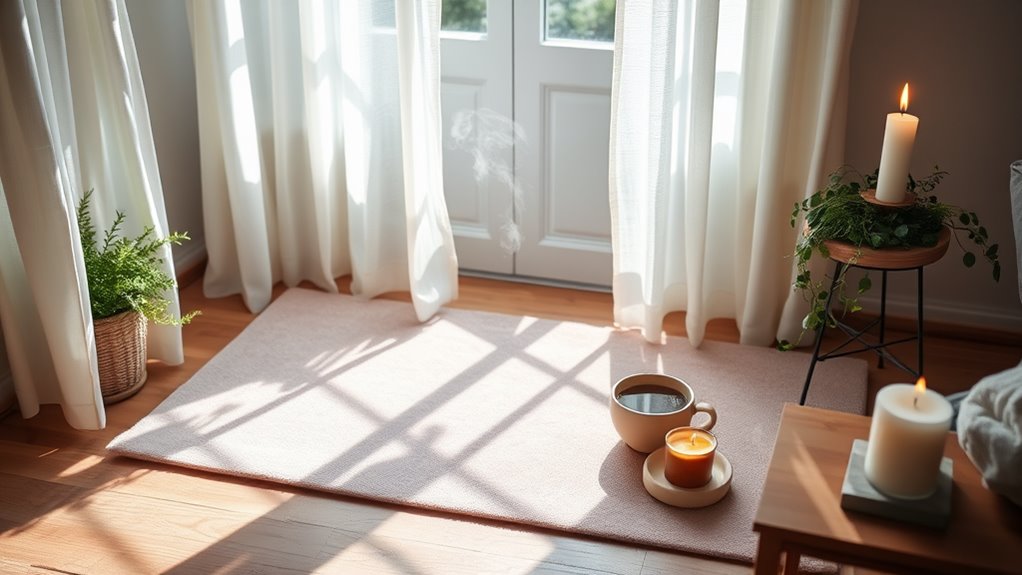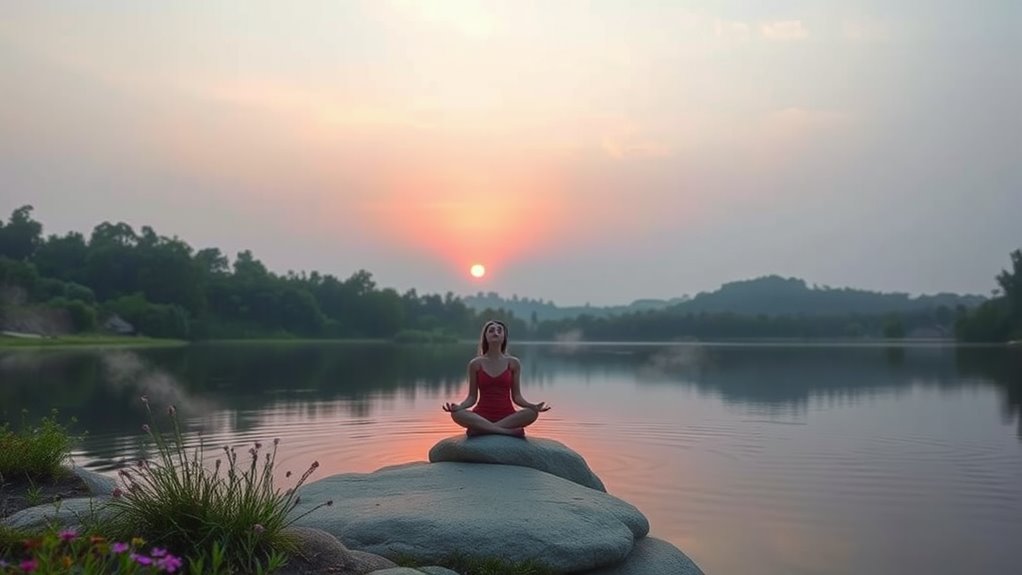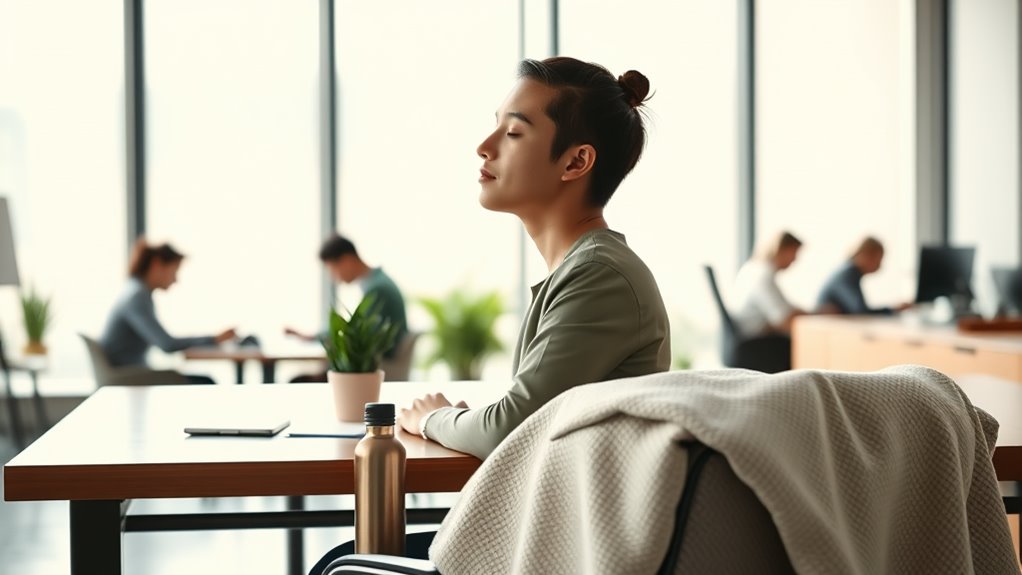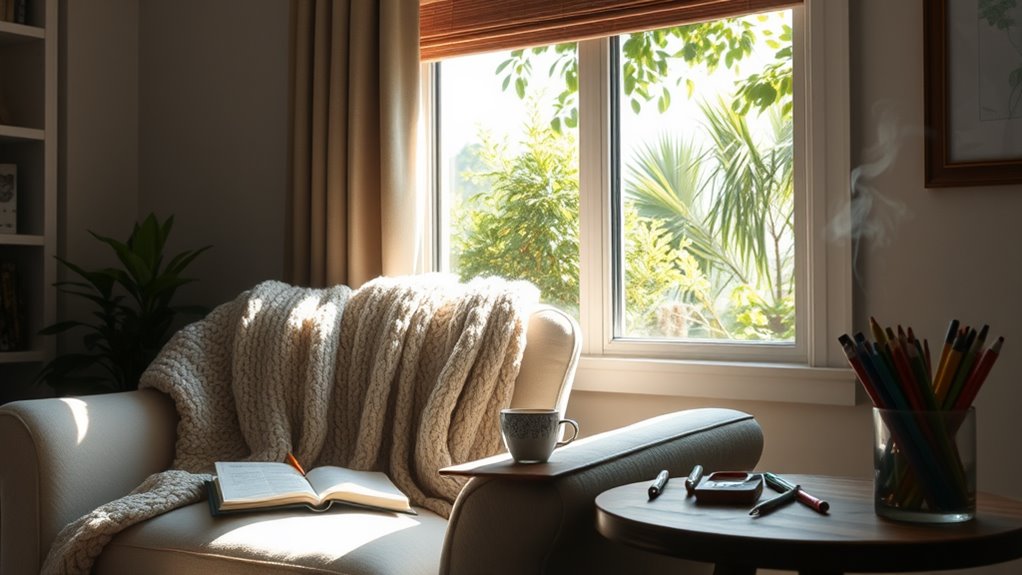Relaxation Techniques You Wish You Knew Sooner!
You’re about to unlock relaxation techniques that can change your life. Start with mindful breathing; it anchors your thoughts and calms your mind. Try progressive muscle relaxation to release tension systematically. Guided imagery lets you escape into calming visuals, while body scan meditation encourages awareness and relaxation from head to toe. Visualization techniques can take your relaxation deeper, engaging all your senses for a richer experience. Each method connects you more to the present moment and helps you manage stress effectively. There’s more to explore, so you’re on the brink of discovering even more helpful strategies.
Mindful Breathing
Mindful breathing is a powerful technique that helps you anchor your thoughts and reduce stress. It’s simple yet effective, allowing you to focus on your breath and tune out distractions. When you practice mindful breathing, you take a moment to notice the rhythm of your inhalations and exhalations. This awareness helps you connect with the present moment, giving your mind a break from racing thoughts.
To start, find a comfortable position, either sitting or lying down. Close your eyes or soften your gaze, and take a deep breath in through your nose, feeling your abdomen expand. Hold that breath for a moment, then slowly exhale through your mouth, releasing any tension. Repeat this process, focusing solely on your breath. If your mind wanders, gently bring your attention back to your breathing.
You can practice mindful breathing for just a few minutes or longer if you prefer. The more you do it, the easier it becomes to access a state of calm. This technique not only helps reduce anxiety but also enhances your overall well-being, making it a valuable tool in your relaxation toolkit. So, give it a try and notice the difference it makes in your daily life.
Progressive Muscle Relaxation
Many people find that Progressive Muscle Relaxation (PMR) is an effective way to release tension and promote relaxation. This technique involves systematically tensing and then relaxing different muscle groups in your body, helping you become more aware of physical sensations and stress. To get started, find a quiet space where you won’t be disturbed.
Begin by sitting or lying down comfortably. Take a few deep breaths, focusing on inhaling and exhaling slowly. Start with your feet; tense the muscles for about five seconds, then release and notice the relaxation. Move up to your calves, thighs, abdomen, and so on, until you reach the top of your head.
As you work through each muscle group, pay attention to the contrast between tension and relaxation. This practice not only helps reduce physical tension but also enhances your mental clarity and emotional calm. You can practice PMR anytime you feel stressed or anxious, making it a versatile tool for daily life. By incorporating PMR into your routine, you’ll likely find an increase in overall well-being and a deeper sense of relaxation.
Guided Imagery
After experiencing the benefits of Progressive Muscle Relaxation, you might want to explore another powerful relaxation technique: Guided Imagery. This technique involves using your imagination to create a peaceful and calming mental image, allowing you to escape the stresses of daily life.
To practice Guided Imagery, find a quiet, comfortable space where you won’t be disturbed. Close your eyes and take a few deep breaths to center yourself. Then, picture a serene place—perhaps a beach, a forest, or a cozy cabin. Engage all your senses: imagine the sound of waves crashing, the smell of pine trees, or the warmth of the sun on your skin.
As you immerse yourself in this imagery, allow your body to relax and your mind to let go of any tension. If distracting thoughts arise, gently guide your focus back to your chosen scene. You’ll find that this technique not only reduces stress but also enhances your mood and promotes a sense of well-being. Incorporating Guided Imagery into your routine can be a delightful way to recharge and nurture your mental health. So, give it a try and see how it transforms your relaxation experience!
Body Scan Meditation
To embark on a journey of deep relaxation and self-awareness, consider trying Body Scan Meditation. This technique helps you tune into your body, fostering awareness of physical sensations and promoting relaxation. Find a quiet space where you won’t be disturbed, and lie down comfortably. Close your eyes and take a few deep breaths, letting go of any tension.
Begin by focusing on your toes. Notice any sensations—tingling, warmth, or tightness. Gradually move your attention up through your feet, ankles, calves, and thighs, observing how each area feels without judgment. If you notice tension, simply acknowledge it and breathe into that area.
Continue this process, scanning through your abdomen, chest, arms, and neck, until you reach the crown of your head. Allow each part of your body to relax completely as you go. If your mind wanders, gently guide it back to your bodily sensations.
Visualization Techniques
Visualization techniques are a powerful way to enhance relaxation and mental clarity. By using your imagination, you can create calming mental images that transport you to a peaceful place. Start by finding a quiet space where you won’t be disturbed. Sit or lie down comfortably, close your eyes, and take a few deep breaths to center yourself.
Now, picture a serene scene: maybe it’s a tranquil beach, a lush forest, or a cozy cabin in the mountains. Engage all your senses—feel the warmth of the sun, hear the gentle waves, or smell the fresh pine. The more vivid your imagery, the more effective your relaxation will be.
As you immerse yourself in this scene, let go of any tension or stress. If your mind wanders, gently bring it back to your visualization. You might also try guided imagery, where you listen to recordings that lead you through specific scenes. This practice not only calms your mind but also sharpens your focus.
Incorporating visualization techniques into your daily routine can significantly enhance your overall well-being. So, take a few moments each day to escape into your mind’s eye and experience the relaxation it offers.
Frequently Asked Questions
How Long Should I Practice Relaxation Techniques Each Day?
You should practice relaxation techniques for at least 10 to 20 minutes each day. Consistency is key, so find a time that works for you, and make it a regular part of your routine.
Can Relaxation Techniques Help With Sleep Issues?
Yes, relaxation techniques can significantly improve your sleep issues. By calming your mind and reducing stress, you create a more conducive environment for sleep, helping you fall asleep faster and enjoy deeper rest. Give them a try!
Are There Any Apps for Guided Relaxation?
Yes, there are plenty of apps for guided relaxation. You can try Calm, Headspace, or Insight Timer. They offer various techniques to help you unwind, improve focus, and boost your overall well-being.
What Should I Do if I Feel Anxious During Practice?
If you feel anxious during practice, take a moment to breathe deeply. Acknowledge your feelings, then refocus your attention on your breath or the task at hand. It’s okay to pause and reset when needed.
Can Children Benefit From These Relaxation Techniques?
Absolutely, children can benefit from relaxation techniques. They help reduce anxiety, improve focus, and promote emotional regulation. By teaching them these skills early, you’re setting them up for healthier coping mechanisms throughout their lives.




